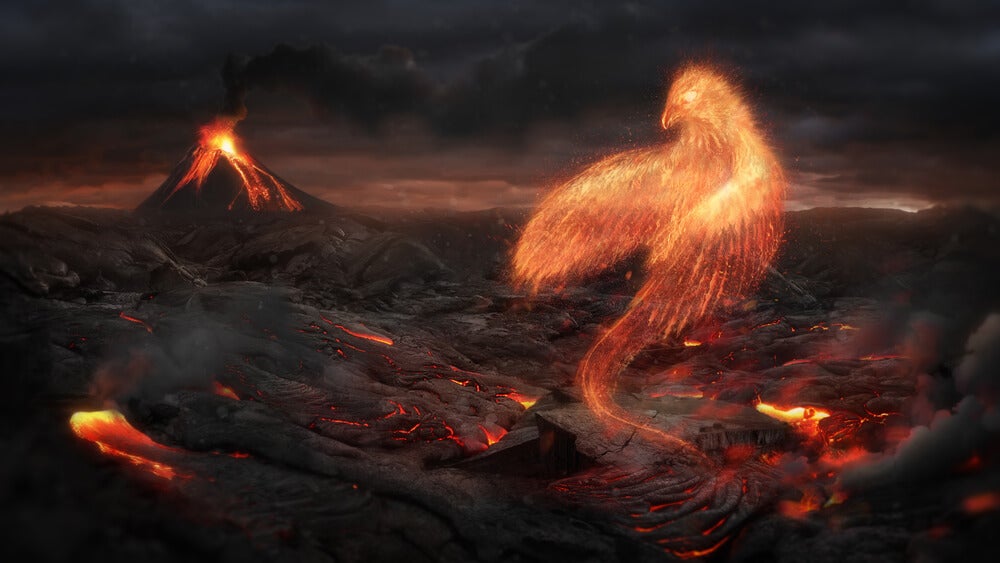Carl Gustav Jung explained it to us in his book “Symbols of Transformation?that human beings and the Phoenix bird have a lot in common. This iconic fiery creature capable of risen majestically from the ashes of its own destruction also symbolizes the power of resilience, that incomparable ability to transform into stronger, braver, and more enlightened beings.
If there is a myth that has nurtured virtually all the legendary doctrines, cultures and roots of our countries, it is probably the myth that refers to the Phoenix, it was said that its tears were medicinal, that it had a lot of physical resistance, control over fire and infinite wisdom. Was she, in essence, one of Jung’s most powerful archetypes because his fire encompassed both creation and destruction, life and death?
“The man who rises is even stronger than the man who has not fallen. – Viktor Frankl-
At the same time, it is interesting to know that there are ancient references to his mythology in both Arabic poetry and Greco-Roman culture, and even in much of the historical heritage of the East. In China, for example, the Phoenix or Feng Huang not only symbolizes the greatest virtue, power, or prosperity, but also represents yin and yang, the duality that constitutes everything that exists in the universe.
However, and it should be remembered, it was in ancient Egypt that the first cultural and religious testimonies of this figure appeared, and it is in this place that this image has been reflected today. Resistance. Every detail, nuance and symbol that describes this myth offers us, without a doubt, a good exercise in reflection.
Viktor Frankl, a neuropsychiatist and founder of logotherapy, survived torture in concentration camps. As he has explained in many of his books, a traumatic experience is always negative, but the result depends on each one. Is it in our hands to rise, to find ourselves?
This admirable ability to renew themselves, to regain the breath, will and strength of our miseries and broken glass passes first through a truly dark phase that many will have lived in their own skin: we speak of “death”. a traumatic moment, we all die a little, we all let go of a part of us that will never come back, that will never be the same again.
In fact, Carl Gustav Jung establishes our resemblance to the Phoenix because this fantastic creature also dies, it also provides the necessary conditions to die because he knows that a much more powerful version of himself will emerge from the remains themselves.
Thus, and among all the myths surrounding this figure, it is the Egyptian myth that offers us the key points to focus on to better understand the relationship between the Phoenix and resilience. We’ll see this myth below.
Ovid explained in his texts that in Egypt the Phoenix died and was reborn once every 500 years. For the Egyptians, this majestic heron was Benu, a bird associated with the floods of the Nile, the sun and death and which, according to explanations, was born under the tree of Good and Evil. This fantastic creature understood the need to renew himself from time to time to acquire more wisdom and, to do so, followed a very meticulous process.
He flew over Egypt to build a nest with the most beautiful elements: cinnamon branches, oak branches, nardo and myrrh. Then, settling into his nest, he sang one of the most beautiful songs the Egyptians had ever heard, and then let the flames burn it completely. Three days later, the Phoenix bird was reborn full of strength and power. He then took his nest and left it to Heliopolis, in the Temple of the Sun, to begin a new cycle, offering inspiration to the Egyptian people.
As we have seen, the Egyptian myth of the Phoenix bird is a beautiful story, however, let’s look at some of its details. Let us see, for example, how the Phoenix builds its nest, looks for the richest materials on its land, those that combine delicacy and strength and that will help it in its transformation, in its ascent.
If we think about it, this process is very similar to what constitutes the psychological dimension of resilience, because we also seek those magical elements with which to build a very strong nest to gather our forces.
Does the human being have to flap his wings to fly over his inner universe in search of the branches of his self-esteem, the flower of his motivation, the resin of his dignity, the land of his hopes and the warm water of his self-esteem?Estimated?
All these components will help you in your ascent, but not before you realize that there is an end, that a part of us will also go away, will become ashes, the remnants of a past that will never return.
However, will these ashes not be swept away by the wind, quite the contrary, will they be part of us to form a being that is re-born from the fire much stronger, greater, wiser?Someone who may be an inspiration to others, but who, above all, will allow us to move forward with our heads up and wings extended.

